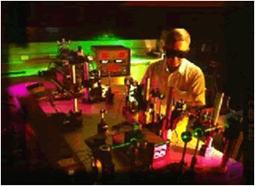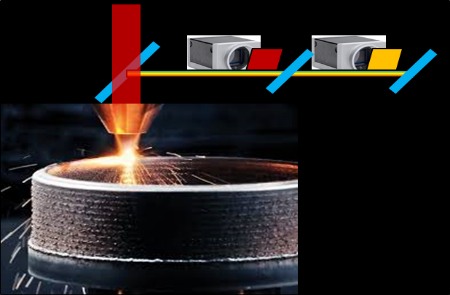OPTICAL RADIATION

Introduction

Optical radition is part of the electromagnetic spectrum, covers from ultraviolet (UV), visible, to infrared (IR) light, with the wavelengths from 100 nm to 1mm. Optical radiation metrology is the science of measurement for light, including the measurement of optical radiation, characterization of light sources and optical detectors / sensors, measurement of optical properties of materials, and so on.
LATEST NEWS
The Optical Radiation Metrology Lab successfully developed an optical phantom to simulate the optical property of human skin as well as the layer structures of the epidermis and dermis. The optical phantom can be used as reference for Optical Coherence Tomography (OCT) and Reflectance Confocal Microscopy (RCM) in cosmetics and dermatological diagnostics.
Measurement for additive manufacturing is a new focus of Optical Radiation Metrology Lab. We started a project on accurate in-situ monitoring and adaptive close loop feedback control for additive manufacturing process recently. In this project, we will develop the characterization method for the additive manufacturing materials, and the monitoring tools, eg. power meters and CCD cameras, in process monitoring.
Measurement Standards and Dissemination
The Optical Radiation Metrology Lab is responsible for the development, maintenance and dissemination of Singapore’s national measurement standards for radiometry, photometry, spectrophotometry and fiber optics to ensure all relevant measurements are traceable to SI units in Singapore. With these capabilities, the lab provides traceable calibration and measurement services to the industries. Beyond measurement traceability dissemination, it also aims to advance measurement technologies in optical radiation metrology. These measurement technologies open up opportunities for R&D and manufacturers in industry.
TRAINING COURSES

We provides trainings for technical professionals and managers on optical measurement. These trainings aim to introduce metrological concepts and practical knowledge in the optical measurement.
Courses conducted in the past:
- Accurate Measurement of Laser/Light Sources and Calibration of photodetectors
- Light and Colour Measurements
- Fiber Optics and Measurement Techniques
- UV measurement
International Comparisons
Recently participated international comparisons:
- APMP.PR-K3 Luminous intensity
- APMP.PR-K4 Luminous flux
- APMP PR-S3 APMP Supplementary Comparisons of LED Measurements
- CCPR-K2.a.2016 Key Comparison on Spectral Responsivity 900 nm – 1600 nm
- CCPR-K2.b.2016 Key Comparison on Spectral responsivity 300 nm - 1000 nm
- APMP.PR-S8 Supplementary Comparison on Optical Fiber Length
- CCPR-K6 Key Comparison on Spectral Regular Transmittance
- CCPR-K1.a Key Comparison on Spectral Irradiance 250 nm - 2500 nm
- EURAMET.PR-S5 Reference Solar Cells at Standard Test Conditions
Research Projects

In-situ Melt Pool Temperature Monitoring and Close-loop Control for LAAM. In metal additive manufacturing, melting pool thermal behavior determines the quality of the process and processed parts. Accurate temperature distribution measurement is a key for ensuring consistent process. This project aims to develop method for melting pool temperature distribution measurement in laser assisted additive manufacture (LAAM). By studying the correlation between key parameter of the distribution and processed part quality, a close loop control system will be developed for consistent AM process.
INTERESTING STORIES

Color and human eyes
Optical radiometry is described and measured in purely physical terms, using physical quantities and units that have general application throughout the physical sciences. Photometry is about visible optical radiation, described and measured in such a way that the results correlate as closely as possible with what the relevant visual sensation would be of a normal human observer. Hence color is a term studied in photometry.
A*STAR celebrates International Women's Day

From groundbreaking discoveries to cutting-edge research, our researchers are empowering the next generation of female science, technology, engineering and mathematics (STEM) leaders.
Get inspired by our #WomeninSTEM
